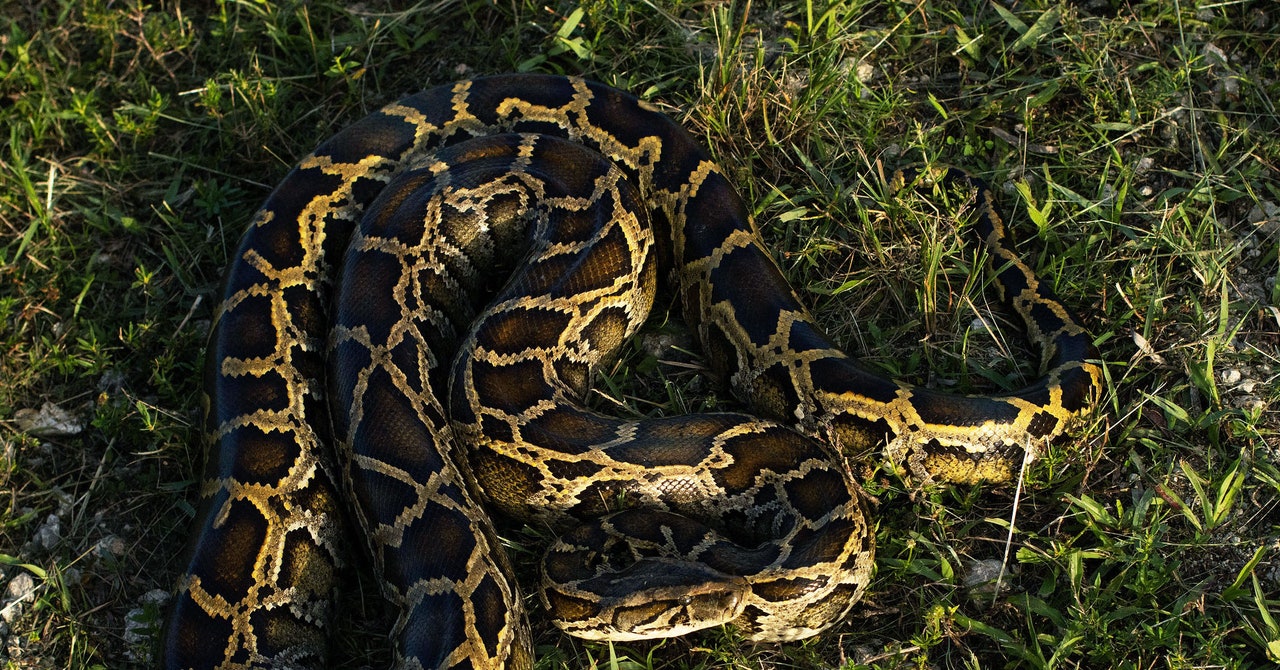That has created a problem. Around 2010, soon after meeting this big, new predator that could outcompete and eat them, South Florida’s mammal populations collapsed. Large and medium-size mammals have been scarce for almost a decade, leaving mostly smaller mammals, like rodents.
Some ecologists thought the pythons would become victims of their own success. “They were supposedly out of food,” says Paul Taillie, a wildlife ecologist at the University of North Carolina at Chapel Hill. But Taillie’s research has shown that pythons just switched to eating the smaller mammals instead, causing those populations to drop too. In 2021, Taillie reported disappointing proof that mammals were not bouncing back. “There’s exceedingly little sign of any mammal activity” in South Florida, he says.
The only resistant species has turned out to be black rats—but they’re also invasive. Black rats arrived in the Americas from Europe centuries ago onboard the ships of explorers and colonizers. They’re resistant because they reproduce a lot and don’t compete with the pythons or large mammals for food: They can scavenge carcasses and eat plants, insects, and scraps from humans. This is the reason they thrive all over the world.
So can anything curb the python’s takeover? First, there are teams like Kirkland’s, which employ contractors to track and capture the snakes year-round. Every capture and kill follows ethics guidelines and federal laws about transporting illegal pets. “They need to be respected as the beautiful living creatures that they are,” Kirkland says. “They’re here through no fault of their own.”
And for six of the past 10 years, Florida has tried to educate the public about invasive species and the folly of keeping pythons as pets, thanks to the Florida Python Challenge, a 10-day event for amateur python hunters, in partnership with the state’s wildlife agency. Participants catch the snakes, which they euthanize. This year, at least 840 participants registered for a shot at $17,500 in prizes. The tally for this year’s hunt hasn’t been released yet, but each of the last two hunts yielded over 200 captures. “It really does a lot to educate the public,” Kirkland says, “to teach about the importance of why you shouldn’t allow an invasive exotic pet to get out.”
But scientists also want to know if the nonhuman denizens of the Everglades are pushing back against the python—specifically, to see if pythons have their own “prey naivete.” Could other species be preying on young pythons?
To answer this question, in 2020 and 2021 a team of USGS researchers implanted 2- to 3-foot-long pythons with radio transmitters and released them back into Big Cypress National Preserve. The transmitters tracked movements down to a 3-meter radius, and each transmitter had a “mortality sensor” that was triggered if the animal hadn’t moved in 24 hours.
Nineteen young pythons died during the study period. Team members waded into the swamp to find out exactly where and how. They snooped for every sign imaginable: paw prints, fur, bite marks, scrapes, and scat. Dead snakes and transmitters turned up in soil, in trees, and underwater. The team brought any carcasses they could find back to the lab for necroscopies. Twelve of the 19 cases had enough evidence to point to a killer, according to results published earlier this year in a study titled “Native bite back.”













+ There are no comments
Add yours